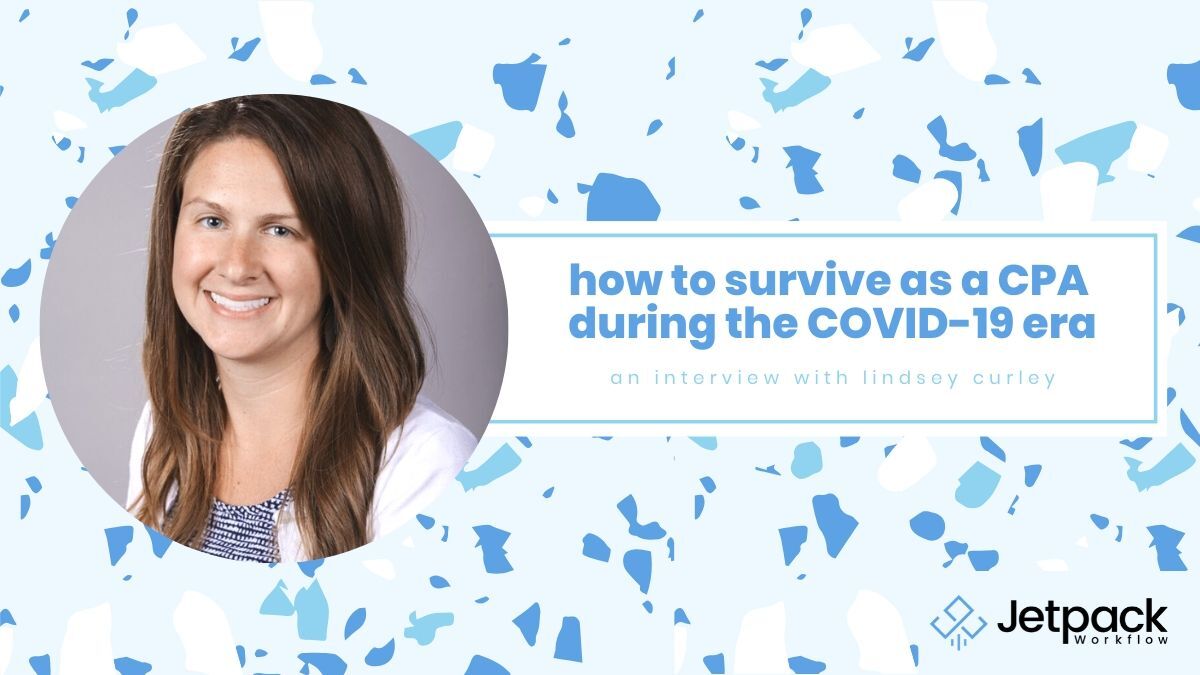How to Survive as a CPA During the COVID-19 Era

Times are changing and we are navigating a new era due to the magnitude of the COVID-19 pandemic. As a result, businesses, CPAs, and entrepreneurs face unique challenges as they adapt their business model to accommodate social distancing practices. In this podcast, Lindsey Curley, senior manager for PCPS and fund services at the AICPA, offers us invaluable information that can help us adapt to this new world.
Summary
- The AICPA as a Go-to Resource
- What can CPAs be doing?
- The AICPA as an Example Remote Organization
- Tips, Tools, and Frameworks for Remote Work
Resources
- Lindsey Curley’s Email
- American Institute of CPAs (AICPA)
- US Small Business Administration (SBA)
- PCPS Homepage
- PCPS resources for firms and small business clients
- Coronavirus (COVID-19) Resource Center
- SBA Paycheck Protection Program resources for CPAs
Related Links
- How To Get Your Firm Into Advisory Services
- How To Not Drown In Deadlines
- Double Your Firm Ch. 1: Increasing Workflow Efficiency And Staff Capacity
- A Curated Directory of 100 Accounting Resources and Tools
- 3 Remote Work Mistakes To Avoid
The AICPA as a Go-to Resource
The role of CPAs has never been more important than they are right now, as they have the ability to help maintain robust business health while moving our economy in a positive direction towards recovery. The accounting industry touches every industry. Right now the CPA can help their clients navigate the 900-page document containing details about the stimulus package and alternative financing. This is the perfect time for CPAs to take on an advisory role with their clients.
As CPAs help their clients, they should be aware of other resources to help them in their agenda. The American Institute of CPAs offers ample resources to help navigate the effects COVID-19 that is updated hourly. AICPA lists important deadlines and government programs, such as the SBA Protection Program, all in one organized place.
What can CPAs be doing?
The key to making the best of this situation is exercising forethought and planning, as Lindsey Curley emphasizes. With the new tax deadline being moved to July 15, many CPAs may have anxiety about what to expect regarding workload. Lindsey mentioned that there is no guarantee that this year will be like an extension season. We understand the anxiousness, and we cover how to handle deadlines and not get swamped in a previous podcast with Maura Wiser.
Several firms have thousands of clients who are thinking about creative ways to adapt to the new business climate. Lindsey recommends connecting businesses who may be struggling with others who CPAs know are faring well. Connecting these two parties can help lead business owners and entrepreneurs toward creative, out of the box methods as they navigate the new economy.
No matter the workload, Lindsey Curley advises CPAs to use this opportunity to solidify relationships with the client. “We need to be there as a counselor,” she highlighted. We have long recognized the need for CPAs to take on an advisory role, and we spoke with Jim Burke about how to expand services to include advising.
PRO TIP: While everything may seem disorienting with the COVID-19 pandemic changing moment to moment, we must remember that there is so much information available! Prevent information inundation during this time by choosing 1 to 3 resources, thought leaders or organizations. Follow them and lean into the information that they share. We’ve listed over 100 resources and tools you can refer to as you begin your search.
The AICPA as an Example Remote Organization
While social distancing is being enforced, Lindsey Curley shows that the AICPA is revving up their connectivity with the community and remaining plugged in to monitor changes. She says, “We are talking with firms to keep a pulse on things. Our advocacy efforts have been and continue to be really impressive.” The AICPA points not only to resources that CPAs can use in their practice, but they also model how to adjust to the new business climate, having suspended traveling up to an entire year.
What many don’t realize is that the AICPA has been a remote organization for a while. Lindsey has been a part of the AICPA for 9 years and while she can’t speak on a team to team basis, she recalls going into the office to work on Mondays, Wednesdays, and Fridays but working from home on Tuesdays and Thursdays. She even recalls how her team tried a “hotel” model with one of the other teams.
When they started the hotel model, two people, one from each team, were assigned to a cube or an office. The caveat was that there were no pictures, just work office decorations. There would be an extra monitor or keyboard so that employees could just plug-in. However, there were plenty of extra workstations and desks available. The advantage of this model is that if one manages the schedule appropriately, one could optimize both space and time.
Another point that Lindsey mentions is that while team members may come into the office at different times, today there is not a single project that warrants anyone coming into the office. Lindsey says that the only time her team would go to the office together would be for team-building exercises and seeing what everyone is doing. She also notes that these meetings take on a much more casual tone, often going out to lunch while talking about each team member’s successes and challenges.
Tips, Tools, and Frameworks for Remote Work
Changing workflow from an in-office model to remote can be challenging for some, but the first step to transitioning is creating a solid workflow for your business. Lindsey advises that when working from home, it is important to set up the workstation as similar to the office workstation as possible. We also add that it is important to affordably balance the “office” workstation with the remote workstation; don’t buy expensive equipment. We discuss other remote work faux pas to avoid in our blog article 3 Remote Mistakes to Avoid.
There are several communication methods available, but Lindsey notes that it’s probably best to maintain the same communications methods that stakeholders are familiar with. “Emails are our primary communication. We use Zoom and the video functions of Skype informally,” she states. She also recommends including a deadline in the email’s subject line to triage informational emails from high-priority emails.
FINAL TIP: Take advantage of the functionality of other programs to fulfill business needs. For example, Lindsey records her meetings using Zoom or Skype so she can reference them later or take notes for others who could not attend the meeting.
Listen to the podcast for more information about how CPAs can become a powerful ally of business owners. If you would like to reach out to Lindsey Curley directly, she can be reached by email at lindseycurley@iacpa/sima.com.





